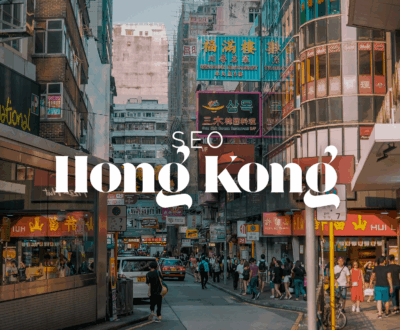How to Promote Your Business Locally in Europe for Free: A Step-by-Step Guide
- September 15, 2025
- Latest Articles on SEO Trends and Tips
Promoting a business locally in Europe doesn’t have to break the bank. In fact, there are many free strategies you can use to reach customers in your town, city, or region across Europe. Below is a step-by-step guide covering practical tactics – from leveraging online listings and social media to forming local partnerships and content localization – that apply to businesses in any European country. We’ll also touch on European SEO (search engine optimization) tips to boost your local visibility. Let’s get started!

- Claim and Optimize Your Free Online Business Listings
Begin by listing your business on free online directories and map services, so local customers can easily find you. The most important is Google Business Profile (formerly Google My Business), which displays your business in Google Search and Maps results. Creating a Google Business listing is completely free – and it’s essential for local discovery. An optimized listing (with correct address, contact info, hours, etc.) helps you appear in relevant local searches and on Google Maps. For example, if someone nearby searches for a “bakery” or “café,” your business can show up in the local results without any advertising cost.
Other free listing platforms to consider include:
- Bing Places for Business – Microsoft’s equivalent of Google’s listing, also free. It’s less used than Google but still worthwhile for visibility on Bing (which some European users prefer).
- Facebook Page – Creating a Facebook Business Page acts as a local listing too. Include your address, phone, and opening hours on your page so people can find you via Facebook search or location-based recommendations.
- Industry-specific or local directories – Depending on your sector, list your business on free European directories or review sites. For instance, restaurants and hospitality businesses should monitor sites like TripAdvisor and ensure they maintain a profile with up-to-date info and respond to reviews. Similarly, local service providers might use regional directory sites or apps (many European countries have their own “yellow pages” or trusted review platforms that are free to join).
Tips for success: Make sure your NAP (Name, Address, Phone) information is consistent across all platforms. Add photos, a compelling description, and your website link to each profile. These business listing sites are generally free to use and can significantly improve your local search visibility and credibility. Encourage happy customers to leave reviews on your Google profile and other sites – positive ratings will boost trust for new customers. By claiming and optimizing these online listings, you lay a strong foundation for local marketing at zero cost.
- Optimize for Local Search (Embrace European SEO Tactics)
To attract local customers online, you’ll want to invest time in local search engine optimization – essentially making your business easy to find in search engines for location-based queries. This is often called European SEO when you adapt your strategy across Europe’s many countries and languages. Local SEO involves targeting geographic keywords (like “near me” searches or including your city/region name on your site) so that people nearby can stumble upon your business. It also means ensuring your website content, meta tags, and online profiles highlight your location and services.
Here are key steps to improve your local SEO:
- Use location keywords on your website. Identify terms customers might search for along with your location (e.g. “plumber in Valencia” or “dentist near me” in the local language). Include those in your site titles, headings, and content where relevant (but keep it natural).
- Create location-specific pages or content. If your business serves multiple areas, consider having separate pages or sections for each city or country with localized information. This can help you rank better for each locale.
- Build local backlinks and citations. Try to get mentioned or linked by other local websites – for example, a local chamber of commerce directory, community blog, or an event page. These signals can improve your site’s authority in local search.
- Leverage Google Business Profile features. As covered in Step 1, maintaining your Google listing helps your SEO. Regularly update it with posts, answer Q&As, and encourage reviews – all these activities can boost your ranking in the local pack.
Keep in mind that Europe SEO isn’t one-size-fits-all, because Europe is a patchwork of different markets. Each country has its own languages and even popular search engines. While Google is the market leader in most places, some countries have alternatives: for example, Yandex is widely used in Ukraine and Turkey, Seznam in the Czech Republic, and Bing has a notable user base in countries like Norway. A good European SEO strategy adapts to these differences. Make your website accessible in the local language (more on this in Step 5) and consider country-specific search trends. By following these localized SEO practices, your business will rank higher for local searches, driving organic (free) traffic and customers to your doorstep.
- Leverage Social Media for Local Engagement
Social media is one of the most powerful free tools to promote your business locally. Think of your social media profiles as an extension of your storefront or website – a place to attract and interact with local customers. Setting up a business account on platforms like Facebook, Instagram, X (Twitter), LinkedIn, or TikTok costs nothing, though it does require an investment of time and creativity. The key is to use these channels to build a community presence rather than to simply advertise.
Build your local presence on major platforms: At minimum, create a Facebook page (if you haven’t already) and update it regularly with news, offers, or behind-the-scenes content about your business. Facebook is widely used across Europe and also hosts countless local community groups. Join local Facebook groups related to your town or industry and participate genuinely – answer questions, share helpful info, and get your name known (without constantly spamming your business link). This way, when someone from the community needs a service you offer, members might recommend you. Similarly, on Instagram, use location tags and local hashtags (often, cities or regions have popular hashtags in the local language). Engaging with posts from local influencers or customers can increase your visibility in the community.
Adapt to region-specific social habits: Different European countries may favor different platforms or communication styles, so adjust accordingly (social media localization). For example, WhatsApp and Telegram groups are popular for community updates in some regions; in others, professional contacts might connect via LinkedIn. Tailor your tone and language too – a witty English tweet might work in the UK, while a more formal approach could be better received on a German business forum. Don’t hesitate to use the local language on social posts if you can; it shows you speak the community’s language literally and figuratively. In fact, using region-specific platforms and engaging local influencers can enhance your credibility among local audiences.
Stay active and responsive: Whichever channels you choose, consistency is key. Post regular updates (even if just once or twice a week) and respond quickly to comments or messages. Social media is a two-way street – prompt interaction with followers signals that you care. Importantly, an inactive page can reflect poorly on your business, so start with one platform if needed and do it well. When used effectively, social media provides free advertising and helps humanize your brand, allowing you to build loyalty with local customers at no cost beyond your time.
- Partner with Local Businesses and Communities
No business exists in isolation – especially at the local level. Building relationships with fellow businesses and community organizations in your area can significantly amplify your reach for free. By teaming up and cross-promoting each other, all parties can benefit from exposure to each other’s customer base. Partnerships and community involvement are win-win local marketing strategies.
Here are some ways to leverage local networks:
- Join local business groups or networks. Many towns and cities across Europe have business associations, merchant groups, or Chambers of Commerce that meet regularly. Joining these (often for free or a minimal fee) lets you network with other entrepreneurs. Aside from getting support and advice, you can gain referrals – people in the group might recommend your business when someone asks for a service. By getting to know prominent people in your area, you open the door to word-of-mouth marketing and insider opportunities.
- Cross-promote with complementary businesses. Identify businesses in your vicinity or industry that aren’t direct competitors but share a similar audience. For example, if you run a bakery and there’s a coffee shop nearby, you could agree to display each other’s flyers or mention each other on social media. Such cross-promotion costs nothing and helps both businesses reach new local customers. You might also bundle services (e.g. a hotel and a local tour guide offering a joint package deal) – each partner promotes it to their clientele.
- Collaborate on local events or initiatives. Look for community events – fairs, festivals, charity drives, school events – where you can contribute in kind rather than cash. Perhaps you can give a short free workshop, donate a product as a prize, or co-host a small event with another business. In exchange, your business gets mentioned in event publicity or on the day of the event. This boosts your visibility among attendees and positions you as an active community member. If events aren’t available, consider creating your own small meetup or an online local contest in partnership with others.
- Leverage local influencers or personalities. In every community, there are individuals (bloggers, Instagrammers, community leaders) who have a following. Form relationships with these people – not necessarily by paying them, but by engaging authentically. For instance, a local food blogger might be happy to review your new menu item, or a neighborhood Instagram page might feature your shop if you share great photos. Such collaborations can authentically promote your business to local followers without formal advertising.
The main idea is to integrate your business into the local fabric. When you support others, they’ll often support you in return. Partnerships and alliances with local businesses allow you to tap into their market knowledge and audience. Likewise, community engagement builds goodwill – people prefer to buy from businesses they recognize as fellow community members. Over time, this network effect can dramatically increase your local profile, entirely for free.
- Localize Your Content and Marketing for Each European Market
Europe’s diversity is a strength – and as a business, you should embrace it by localizing your content to resonate with different local audiences. Whether you operate in one country or across multiple European regions, adapting your marketing materials to the local language and culture will make your free promotional efforts much more effective. Simply put, speaking your customers’ language (literally and figuratively) is key to winning their trust.
Translate and tailor your content: If you serve customers who speak different languages (even within one country, like Spanish and Catalan in Catalonia, or English and French in Brussels), consider providing content in each relevant language. This could mean having your website available in multiple languages and using each target language on social media or in flyers. Making your web pages accessible in the local language and customizing your messaging to local culture shows respect and improves customer engagement. For example, a slogan or joke that works in English might not translate well into Italian – you’d want to adjust the phrasing to fit Italian cultural context. Similarly, use local units of measure, currency, and references that locals understand.
Apply European SEO localization: Content localization isn’t just for user experience – it’s also a pillar of SEO. To boost your Europe SEO results, incorporate local keywords and search terms in the native language throughout your content. People in Poland will likely search in Polish, and people in France in French; having those terms on your site (and in your metadata) will improve your visibility on search engines in those countries. Also, use tools like hreflang tags on your website to signal to Google which language/region each page is meant for. This helps search engines direct users to the appropriate version of your site, improving your overall European SEO.
Reflect local customs and preferences: Beyond language, consider cultural differences in how you promote. European consumers have varied tastes and values – for instance, what appeals to customers in Sweden might not land the same way in Spain. Adjust your imagery, color choices, or references to align with local sensibilities. Be mindful of local holidays and seasons too: a free marketing campaign tied to Christmas will have more impact if you time it according to the country’s traditions (not all of Europe celebrates on the same date or with the same intensity), and acknowledging local holidays (like Bastille Day in France or Sinterklaas in the Netherlands) can make your marketing feel more personal to that audience.
In summary, content localization is crucial in a European context. Tailoring your marketing materials to each local language and culture demonstrates that you value your audience and are part of their world. This not only endears customers to your brand but also enhances your online performance in each locale. Combined with the earlier steps – strong local listings, SEO, social media, and partnerships – a localized approach will ensure your business can be discovered and loved by communities all across Europe, all without spending a cent on advertising.
Conclusion
Promoting a business locally in Europe for free is entirely achievable with a bit of creativity and effort. By establishing a solid online presence (through free listings and localized SEO), engaging your community on social media, collaborating with local partners, and speaking the local language in your content, you can effectively reach customers from Dublin to Dubrovnik and everywhere in between. Importantly, these steps are broadly applicable across industries – whether you run a shop, a service business, or a startup, the principles of community engagement and localized Europe SEO will help you grow your local customer base.
Start with the steps that make the most sense for your situation, and build from there. Remember, consistency is key: maintain your profiles, keep engaging, and continuously adapt to feedback from your local audience. Over time, these free strategies can significantly boost your visibility and reputation in your area. Good luck with your local marketing journey across Europe!
About us and this blog
We are a digital marketing company with a focus on helping our customers achieve great results across several key areas.
Request a free quote
We offer professional SEO services that help websites increase their organic search score drastically in order to compete for the highest rankings even when it comes to highly competitive keywords.








